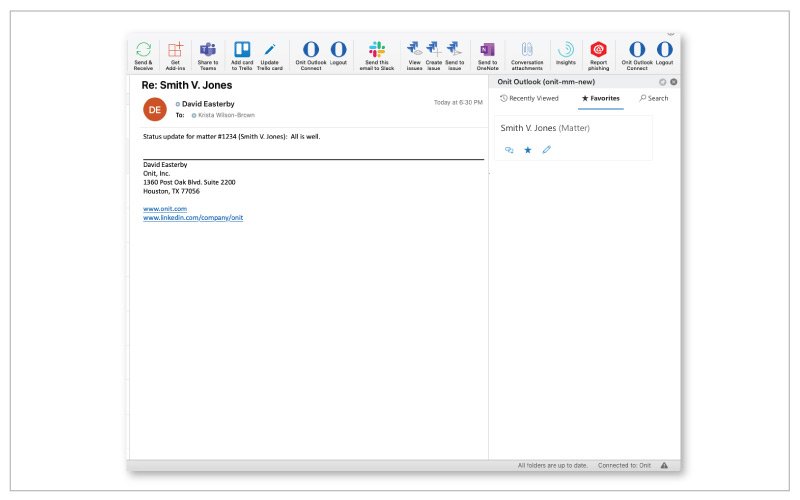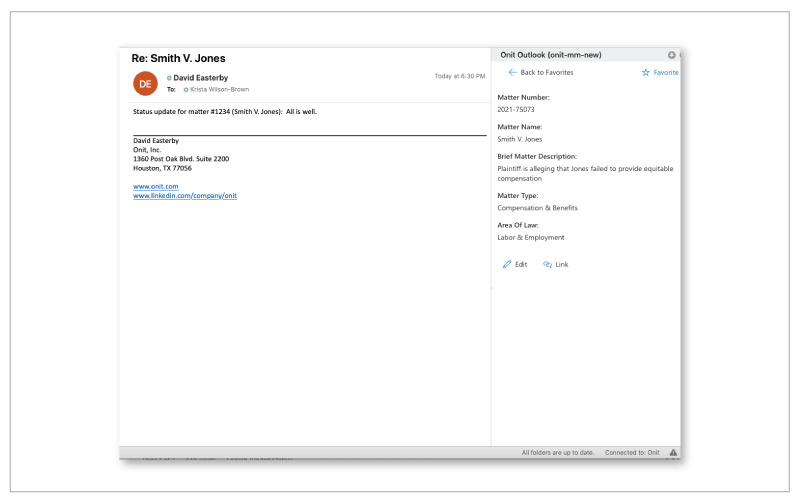
Legal tech is at a tipping point. Demand for solutions that automate menial tasks and enable organizations to operate more efficiently is accelerating adoption, fueling significant growth across the sector. And with greater adoption comes increased investment. Investors who historically shied away from legal, are beginning to add legaltech companies to their portfolios at a rapid pace.
Jean-Marc Levy, Operating Partner at private equity firm Edison Partners and former CEO of risk and compliance management platform ComplySci, has noted strong similarities between the growth trajectory of fintech, regtech, and now legaltech.
Bodhala CEO, Raj Goyle, recently sat down with Jean-Marc to get his thoughts on these parallels – everything from the convergence of technologies and the waves of innovation that technology businesses undergo, to what makes these solutions attractive to investors and how to build a successful platform solution.
RG: Jean-Marc, thanks for taking the time to chat with me. You have a robust background in fintech and regtech – how did you get into that space?
JML: I’m an engineer and computer scientist by training — I use technology to solve problems. After working for several years at the New York Stock Exchange, I looked at the regulation, compliance, and governance space and it became absolutely striking that these markets had the exact same characteristics as the early fintech ecosystem. They had fragmented and inefficient processes, data sets that didn’t talk to one another, no standardization, and no benchmarks. It was clearly a space where technology could make a huge difference – so I dove in.
RG: You mentioned something recently that really resonated with me – you think that legaltech is currently where fintech and regtech were roughly 15 years ago.
Obviously, you’re an expert in regulatory issues, compliance, and a successful operator and investor so I’m curious to know — what makes you think that? What are you seeing in legaltech that makes you think we’re in the very early innings of something huge?
JML: Taking a step back, if you think about the history of fintech and regtech, we’re probably on the third or fourth wave of fintech and regtech innovation.
The first wave of fintech innovation was primarily around taking any process related to a financial transaction, often a tiny element or the entire workflow, and taking inefficient manual processes and simply automating them — nothing else. No other value-add, quite frankly. But it was enough to create some very successful businesses in that first fintech wave.
Regtech is very similar. The initial first wave was just automation. As a compliance officer, for example, you need to manually review a whole stack of financial statements for your employees. Just allowing you to do that electronically was a huge opportunity. But you could argue there was very little value-add other than simply automating a manual process.
Once people get accustomed to automating very manual tasks, you flow into the second wave of innovation — how do these tasks constitute an overall workflow and can that workflow be enhanced and made more valuable through automation?
In the second wave of regtech innovation, you start looking at how the automated parts of the workflow can actually create more opportunities for value. By definition, as you continue to evolve those processes, you start introducing concepts like standardization, so that certain workflows are always consistent, with reliable data sets.
The third wave of innovation involves taking all those workflows and allowing them to become interoperable and communicate with one another. It’s all about data standardization, APIs, microservices, and making your platform open enough so it can incorporate other data sets to create more value.
Legaltech is likely around the second wave.
RG: Are you seeing a big convergence between fintech, regtech, and legaltech?
JML: What I’m seeing more and more is actually the lines and the boundaries becoming increasingly blurry and porous. For example, Bodhala could technically be characterized as a procurement tech solution and a legaltech solution, right? But what does the convergence of all of those technology-enabled markets really mean for firms that are specialized in just one of the areas?
This convergence that we’re seeing now in this fifth wave of innovation is both a challenge, as well as an enormous opportunity. It’s a challenge because if you don’t pay attention and keep your focus solely on your core market, a lot of people around you that may not be “pure” legaltech companies, but are adjacent, are going to start encroaching on some of the things that you do.
On the other hand, the opportunity is that you’re not limited to marketing yourselves to one audience anymore so you can expand and specialize within certain areas.
I think the fifth wave of innovation is actually much broader than just a single segment like fintech, legaltech, or procurement tech — I see a huge convergence.
RG: In your experience as a successful tech operator, why do you think people, markets, and sectors do not always act rationally? Why do tech companies have to go through all of these waves of innovation and “cross the chasm” even when the ROI is clearly there?
JML: It’s a combination of things, but I think the most important transformation that I’ve seen in the course of my career is that, even in smaller companies and very much so in larger companies, there is no such thing as a purchase decision that’s made by a single individual. This is a transformation that has taken place over the last 10 or 15 years.
It started with larger companies, but we’re seeing it everywhere now as businesses become more collaborative and less siloed. Almost every purchase decision has multiple stakeholders, so even though the ROI and savings is clear to the General Counsel, for example, others will ask “Are we still going to be using the best vendors? How will this affect our relationships? How can we ensure compliance?”.
There are so many stakeholders involved in these decisions now that you have to be able to sell to all of these personas that have different value propositions.
RG: What are the characteristics of a market that’s right for a technology solution?
JML: Typically very fragmented industries or industries with a lot of niche vendors — like mom and pop shops that solve a very niche problem — and where there is very little standardization of data processes and workflows. And simultaneously, there’s a great deal of pressure to generate customer-facing value and not spend as much time on back-office systems that are not perceived as value-creating.
These are the characteristics of a market that’s right for a technology solution based on what we saw in fintech 30 years ago and what we saw in regtech about 10 years ago.
We’re starting to see this in legaltech now too. There are a lot of really good companies that solve very specific problems, like e-discovery solutions or Bodhala in outside counsel optimization, for example. But what we haven’t seen yet in legaltech is the emergence of more sophisticated workflows within the legal organizations that incorporate several of those niche products.
RG: Legal has a reputation in the investor world as being too hard to sell to because it’s a clubby and relationship-driven market. But you’ve mentioned previously that this is what people used to say about financial services 30 years ago — tell us more about that.
JML: If you were a technology vendor in the financial services space in early fintech waves, you were wondering how to get in the door at Goldman Sachs or at the small hedge funds. It was all about word of mouth or who you knew and a lot of transactions were taking place just with a handshake.
But a lot of those preconceived ideas become immediately disrupted once you have a successful proof point. These proof points are typically much easier to achieve when you’re focusing on the niche solution and a very specific aspect of a problem. All kinds of digital transformations begin by addressing a very narrow, niche problem that opens the floodgates.
RG: Why do you think we’re seeing more — and will continue to see more — activity in the private equity, growth equity, and venture capital space around legaltech?
JML: The number one reason is clearly valuation. Tech companies, especially if you’re a SaaS business and have a predictable model, attract much higher valuations than less traditional growth-type companies.
Secondly, I think that it’s because a lot of private equity firms like very systematic, predictable, measurable models. Because of the nature of SaaS businesses or technology-enabled businesses, it’s easier to understand businesses and put systems in place around them that mimic what private equity people want to see.
As a SaaS operator, you’re already tracking some very specific metrics that are very attractive to private equity firms. If they want to invest in a more traditional retail business, for example, there are systems in place, but they don’t necessarily align as well with investors as technology-enabled businesses would.
I think the main driver however is still the valuations and if tech starts cratering substantially at some point, then I’m sure private equity will get very excited about something else at that point.
RG: For a convergence of sectors — in procurement, legal, regulatory, and compliance — to happen, obviously a lot of investment dollars have to flow in. If you look at the top PE shops in five years, do you think they’ll have double the number of portcos in these sectors?
JML: They won’t necessarily have double the number of portcos, but they will have much more revenue associated with the space.
When convergence like that happens, it follows a model. A good investor wants to find a reliable, solid, healthy platform that is already well managed, well-run and has some good, strong independent growth on its own. Then, they want to start bolting on several pieces to turn that platform — both organically and through acquisition — into a broader and more converged platform.
There are still very few massive platforms out there which is why private equity firms are still very excited about finding any kinds of business that could be a platform to build on.
Private equity shops are obviously investors in tech, but also are huge consumers of any kind of tech — whether it be procurement, legal, et cetera.
RG: Is there any threat to the notion that private equity will continue to invest in the legal space and then also become consumers of this space? What are the big macro forces that might challenge your premise?
JML: I’d worry more about a disruptor — someone who understands the concept of the fourth and fifth waves of innovation and who has come up with a great AI-based solution that completely turns around a process to make it more efficient. That’s truly very existential at that point.
Knowing my gut, being a technologist and having seen several innovation cycles and disruptors come on the stage, I’m more worried about a brand-new disruptor that nobody saw coming who investors are now enamored with.
RG: As you touched on earlier, when you’re a small business you’re thought of as an add-on to another platform. But as you get bigger, you hope to eventually be thought of as a platform.
To other founders out there, how should they think about the journey that they need to take on day one? Should they think of their businesses as a platform from the start or is it more organic than that?
JML: I think most people have thought it is that a platform is a business that could organically, even if it just stays in its own space, continue to build and grow at a very attractive pace.
So, for example, if your business cannot organically grow 15 to 20 percent, it wouldn’t be thought of as a platform. A platform is really about having enough customers that you can start selling them more and more stuff and have a predictable, sustainable source of growth that can allow you to do small acquisitions, organic experiments, etc. But it’s also about scale to some extent, total addressable market, and total standalone organic opportunities.
—–
Legal industry innovation is happening today — albeit slowly. But Bodhala is on a mission to create a transparent, functional market for legal services, using data to illuminate price discovery, drive competition, and foster innovation.
Want to be part of the next wave of legaltech innovation?
Get in touch with our team of legal industry experts to find out how Bodhala can help you run your legal department like a business with data.





![BT’s new platform, ‘MyLegal’, allowed the legal team to overhaul how it managed external spend, as well as several other process improvements. Judges [of the Legal Innovation Awards] agreed this winner stood out, not only due to the speed of their roll-out of the platform, but by taking an existing process and migrating it into a streamlined, efficient platform.](https://www.onit.com/wp-content/uploads/2025/03/Post-Quote-210701-1.jpg)



 The Onit email integration is the shortcut you need to handle your email and work in the same place
The Onit email integration is the shortcut you need to handle your email and work in the same place



